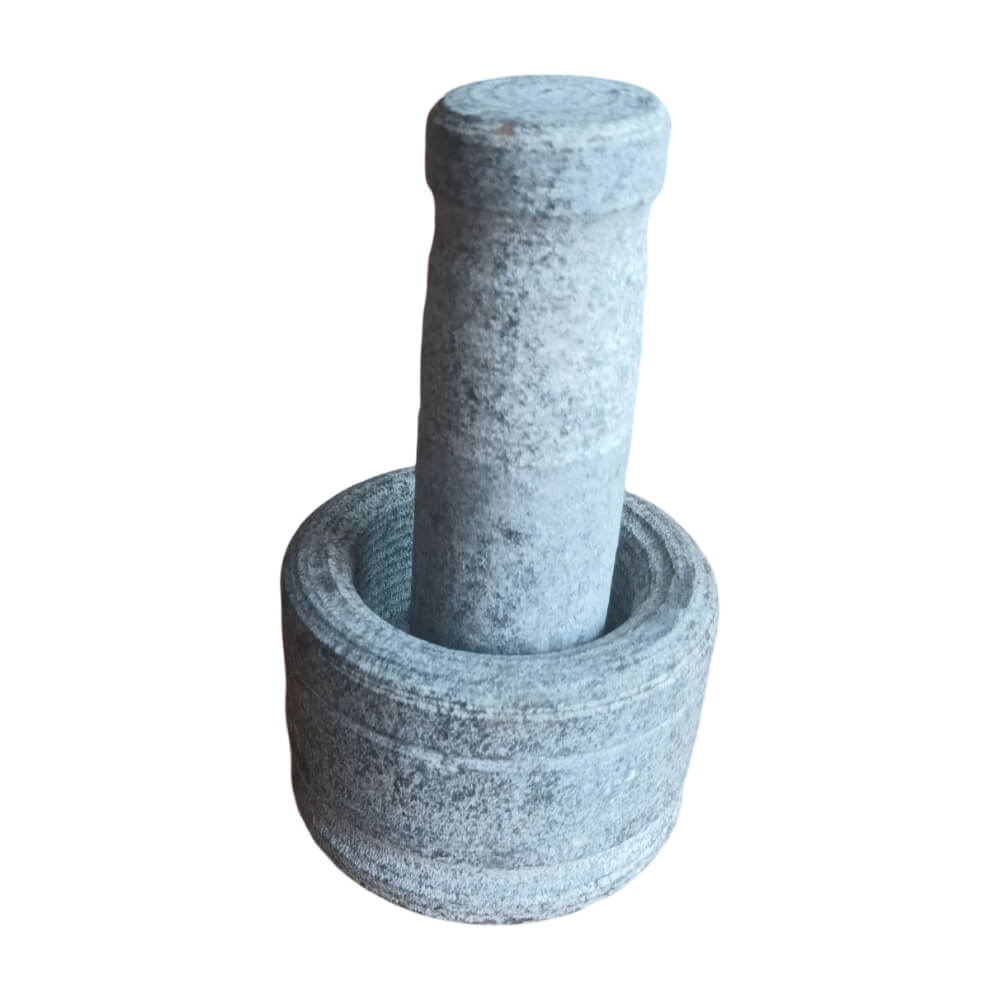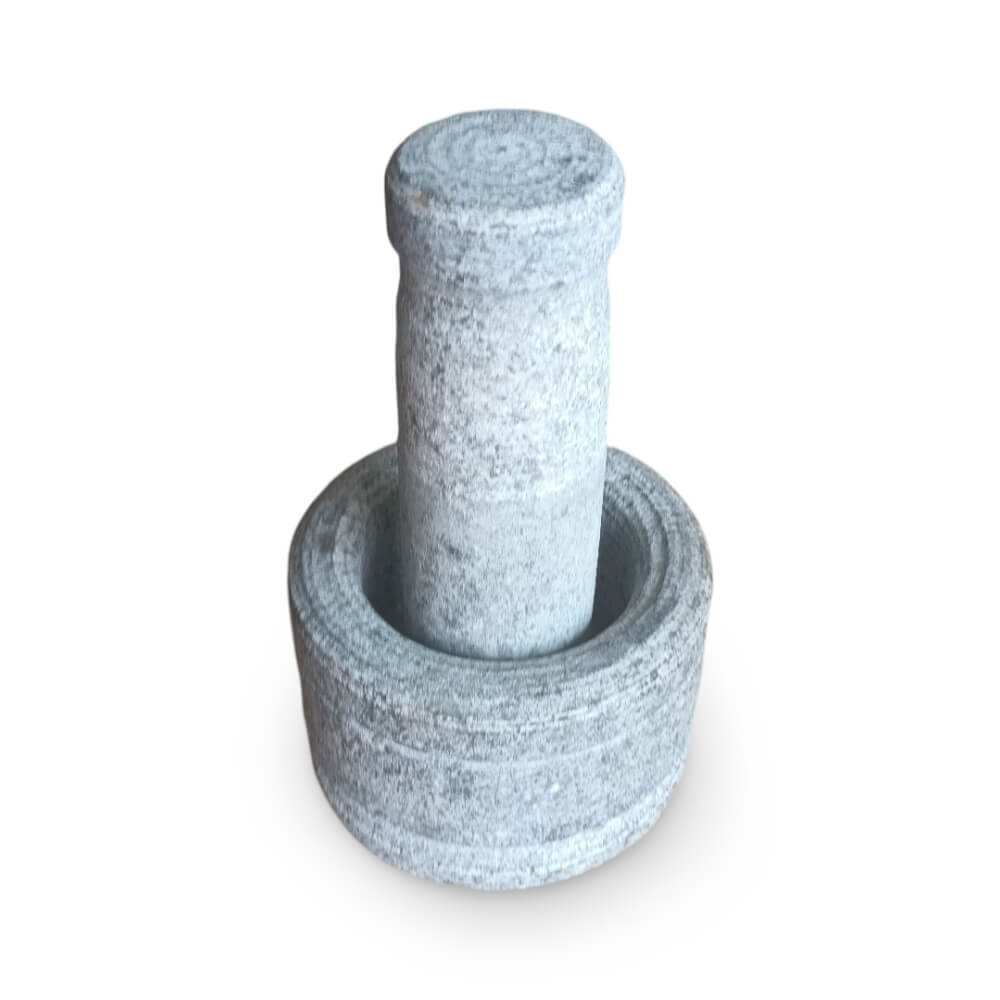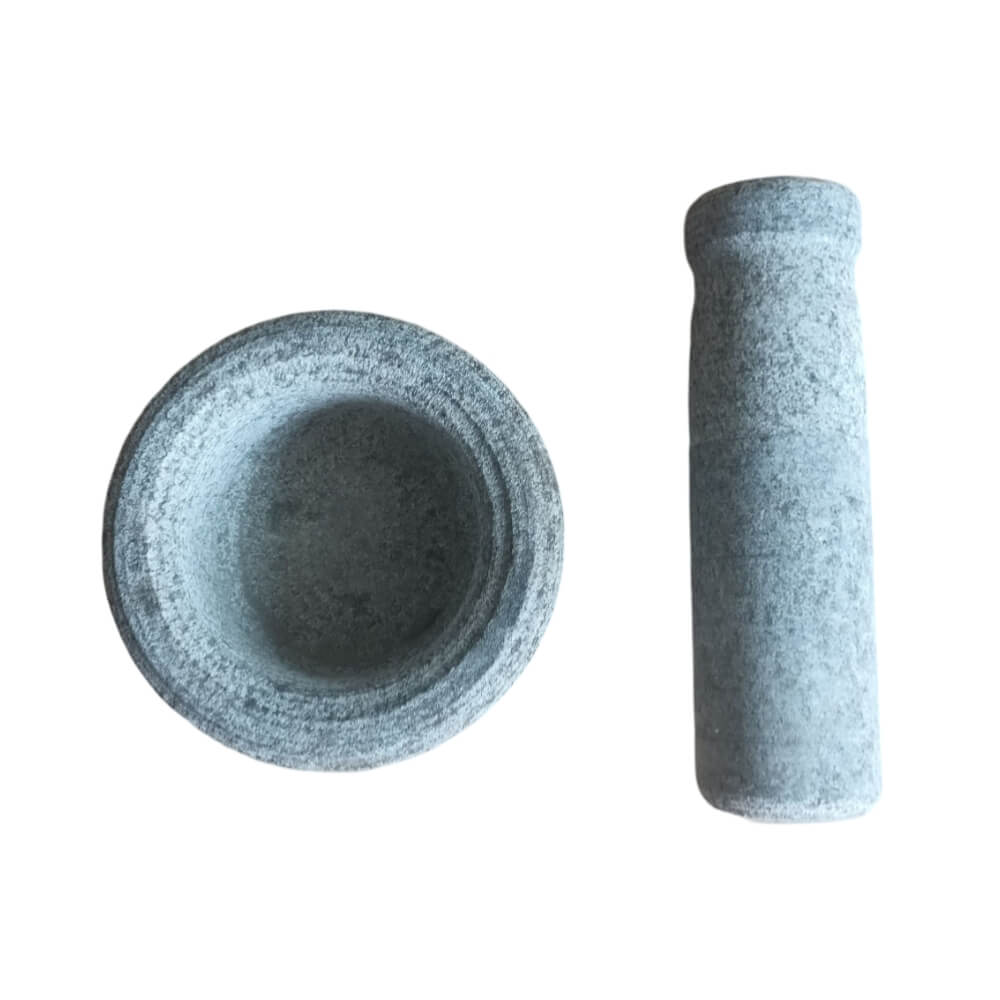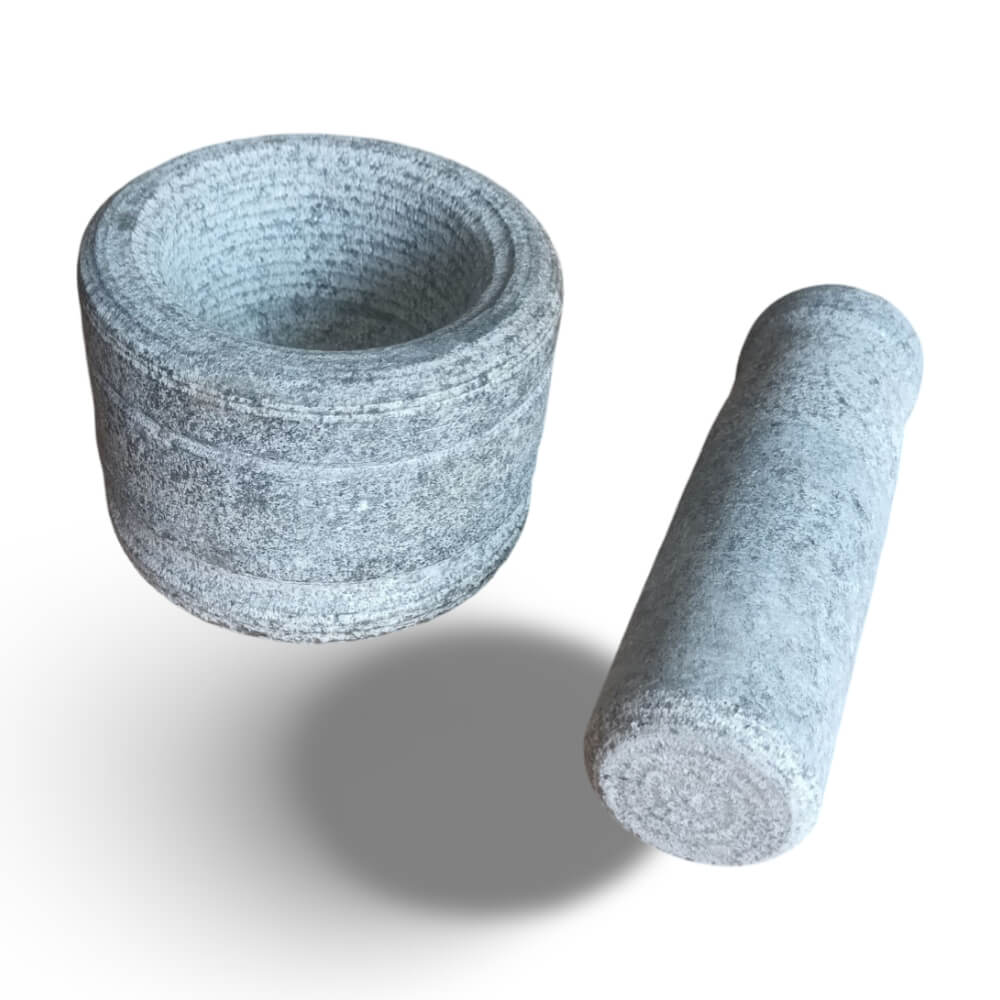Stone Mortar and Pestle Indian
“Discover the traditional Indian stone mortar and pestle (Okhli-Moosal), used for grinding spices, chutneys & Ayurvedic remedies for rich flavors.”
රු3,100.00
Compare**Stone Mortar and Pestle in Indian Culture: A Timeless Kitchen Essential**
The **stone mortar and pestle**, known as *”Okhli”* and *”Moosal”* in Hindi, is one of the oldest and most essential tools in Indian kitchens. Used for grinding, crushing, and blending spices, herbs, grains, and pastes, this traditional utensil has been a cornerstone of Indian culinary practices for centuries. Made from sturdy materials like granite, marble, or soapstone, the mortar (a bowl) and pestle (a heavy grinding tool) work together to release the full flavor and aroma of ingredients, enhancing the taste of Indian dishes.
**Historical and Cultural Significance**
The use of stone mortars and pestles in India dates back to ancient times, with references found in early Ayurvedic texts and traditional cooking methods. Unlike modern electric grinders, the slow, manual grinding process ensures that the natural oils and essences of spices are preserved, resulting in richer flavors. In many Indian households, especially in rural areas, the stone mortar and pestle remain indispensable for preparing fresh masalas (spice blends), chutneys, and medicinal pastes.
In addition to cooking, the mortar and pestle hold cultural and religious significance. They are often used in Ayurveda for preparing herbal medicines and in Hindu rituals for grinding sacred ingredients like sandalwood, turmeric, and vermilion.
**Design and Material**
Indian stone mortars and pestles are typically made from:
1. **Granite** – Durable, heavy, and resistant to wear, granite mortars are ideal for grinding hard spices like black pepper, cardamom, and cumin.
2. **Marble** – Smooth and cool, marble mortars are preferred for grinding wet ingredients like garlic, ginger, and fresh herbs.
3. **Soapstone** – Softer than granite, soapstone mortars are often used in South India for making idli/dosa batter and chutneys.
The pestle is usually cylindrical with a rounded end, allowing for efficient crushing and grinding. Some traditional designs feature grooves inside the mortar to aid in grinding coarse ingredients.
**Culinary Uses**
The stone mortar and pestle are used to prepare a variety of Indian dishes, including:
– **Spice Blends (Masalas)** – Freshly ground garam masala, sambar powder, and curry powders.
– **Chutneys & Pastes** – Coconut chutney, mint-coriander chutney, ginger-garlic paste.
– **Medicinal Preparations** – Ayurvedic remedies like *Haldi Doodh* (turmeric milk) and herbal pastes.
– **Batters & Doughs** – Wet grinding for idli/dosa batter or kneading dough for traditional bread.
**Advantages Over Modern Appliances**
1. **Enhanced Flavor** – Slow grinding preserves essential oils, making spices more aromatic.
2. **Texture Control** – Allows for coarse or fine grinding as per requirement.
3. **No Heat Generation** – Unlike electric grinders, stone grinding does not generate heat, which can alter flavors.
4. **Eco-Friendly & Chemical-Free** – No electricity is needed, and there’s no risk of plastic or metal contamination.
**Maintenance and Care**
– Clean with water and a stiff brush; avoid soap to retain the stone’s natural seasoning.
– Dry thoroughly to prevent moisture retention and bacterial growth.
– Occasionally rub with oil (mustard or coconut) to maintain the stone’s smoothness.
**Conclusion**
The stone mortar and pestle symbolize India’s rich culinary heritage, offering unmatched flavor and authenticity. Despite modern kitchen gadgets, many chefs and home cooks still prefer this traditional tool for its ability to unlock the true essence of spices. Whether used for daily cooking, Ayurvedic remedies, or cultural rituals, the stone mortar and pestle remain an irreplaceable part of Indian tradition.















